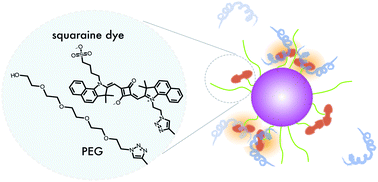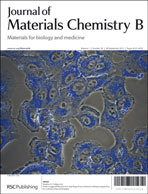Sub-100 nm colloidal particles which are surface-functionalized with multiple environmentally-sensitive moieties have the potential to combine imaging, early detection, and the treatment of cancer with a single type of long-circulating “nanodevice”. Deep tissue imaging is achievable through the development of particles which are surface-modified with fluorophores that operate in the near-infrared (NIR) spectrum and where the fluorophore's signal can be maximized by “turning-on” the fluorescence only in the targeted tissue. We present a general approach for the synthesis of NIR emitting nanoparticles that exhibit a protein triggered activation/deactivation of the emission. Dispersing the particles into an aqueous solution, such as phosphate buffered saline (PBS), resulted in an aggregation of the hydrophobic fluorophores and a cessation of emission. The emission can be reinstated, or activated, by the conversion of the surface-attached fluorophores from an aggregate to a monomeric species with the addition of an albumin. This activated probe can be deactivated and returned to a quenched state by a simple tryptic digestion of the albumin. The methodology for emission switching offers a path to maximize the signal from the typically weak quantum yield inherent in NIR fluorophores.

You have access to this article
 Please wait while we load your content...
Something went wrong. Try again?
Please wait while we load your content...
Something went wrong. Try again?


 Please wait while we load your content...
Please wait while we load your content...